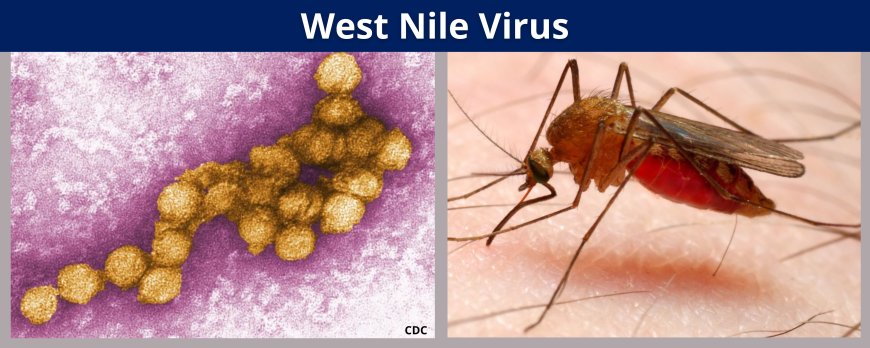West Nile Fever - another threat

KERALA is again on high alert as the state has been reporting cases of West Nile fever — a new vector-borne disease caused by mosquito bites. So far, five cases have been reported but the authorities have already ramped up cleaning drives and surveillance activities ahead of monsoon.
The state government has named Malappuram, Kozhikode and Thrissur from where the cases are being reported. Kerala Health Minister Veena George, in a statement, confirmed that cases of the viral infection have been reported in the state and that all the districts have been asked to be vigilant.
Although George said there was no need to be concerned, but requested anyone showing signs of fever or other symptoms of the West Nile infection to seek treatment immediately.
WHAT IS WEST NILE VIRUS?
The single-strained RNA virus originates in birds and is propagated via the bite of infected Culex mosquitoes among humans and animals. The chances of human-to-human transmission are low.
According to the World Health Organization (WHO), “Mosquitoes become infected when they feed on infected birds, which circulate the virus in their blood for a few days. The virus eventually gets into the mosquito’s salivary glands. During later blood meals (when mosquitoes bite), the virus may be injected into humans and animals, where it can multiply and possibly cause illness.”
Unlike Japanese Encephalitis (often referred to as Japan fever), which primarily affects children, West Nile fever mostly impacts adults.
India has a history with the virus dating back to 1952 when antibodies against West Nile Virus were initially found in humans in Mumbai. The disease was first identified in Uganda in 1937 and has been reported sporadically in Kerala since 2011, with the first cases identified in the Alappuzha district. Deaths related to the virus were reported in 2022 and 2019.
According to the US Centre for Disease Control, “It is estimated that approximately 1 in 150 persons infected with the West Nile Virus will develop a more severe form of disease…Recovery from severe illness might take several weeks or months. Some effects on the central nervous system might be permanent.”
WHAT ARE THE SYMPTOMS?
The disease shows no symptoms in around 80% of infected individuals, but the rest 20% who become infected with the virus will develop West Nile fever, as per WHO.
Those infected often experience dengue-like symptoms such as fever, headache, tiredness, body aches, nausea, vomiting, occasionally a skin rash (on the body’s trunk), and swollen lymph glands.
Severe infections can lead to several neuroinvasive diseases, such as West Nile encephalitis, meningitis, or West Nile poliomyelitis, and in rare cases, death.
PREVENTIVE MEASURES AND TREATMENT
There is no vaccine available for the disease. As per WHO, the treatment for the virus may involve only supportive measures including hospitalisation, intravenous fluids, respiratory support, and prevention of secondary infections.
People should prevent themselves from mosquito bites. They should wear protective clothing, use mosquito nets, apply repellents, and use mosquito-repelling devices.
At home or office, one should ensure that the water is not stagnate or is not a potential mosquito breeding ground.
WHY IS KERALA A HOT SPOT?
From Nipah, dengue, chikungunya, monkeypox to coronavirus and West Nile Fever, Kerala has seen epidemics of all kinds.
Kerala was the first state to report the Covid case in the country. As the state witnessed a climb in cases, it declared a health emergency and took significant steps to control the virus.
In September 2021, Kerala also saw a Nipah virus scare when a 12-year-old boy, who had contracted the disease, died in a private hospital in Kozhikode. Following this, the health authorities sprang into action and isolated people, took samples and sent them for testing. In 2018, the state recorded 18 confirmed cases in Kozhikode, of which, 17 resulted in death.
In August 2021, Kerala health officials battled Zika virus as the state recorded a total of 66 cases, mostly from Thiruvananthapuram.
In July 2022, the Kerala health authority also confirmed the presence of anthrax in the Thrissur district. Subsequently, the state health department, the animal husbandry department and the forest department conducted an investigation. Samples were tested to confirm the case of anthrax infection, the health minister had said.
One of the main reasons why Kerala is prone to viral diseases is the number of Keralites spread across the world. A large number of doctors and nurses from Kerala work in various countries. Some students pursue medical courses abroad. These categories face the occupational hazard of viral attacks.
According to Nature journal, the depletion of forests, the high population density of domestic animals and humans are triggers for viral diseases to spread.
A report in the Malayalam newspaper Mathrubhumi quoted Dr TS Anish, community medicine chief of Thiruvananthapuram Medical College, who said human expansion into forests of the Western Ghats and the reduction of fruit in the forests, attract bats to human settlements in Kerala. These bats could be carrying various diseases, hence making outbreaks even more possible.
